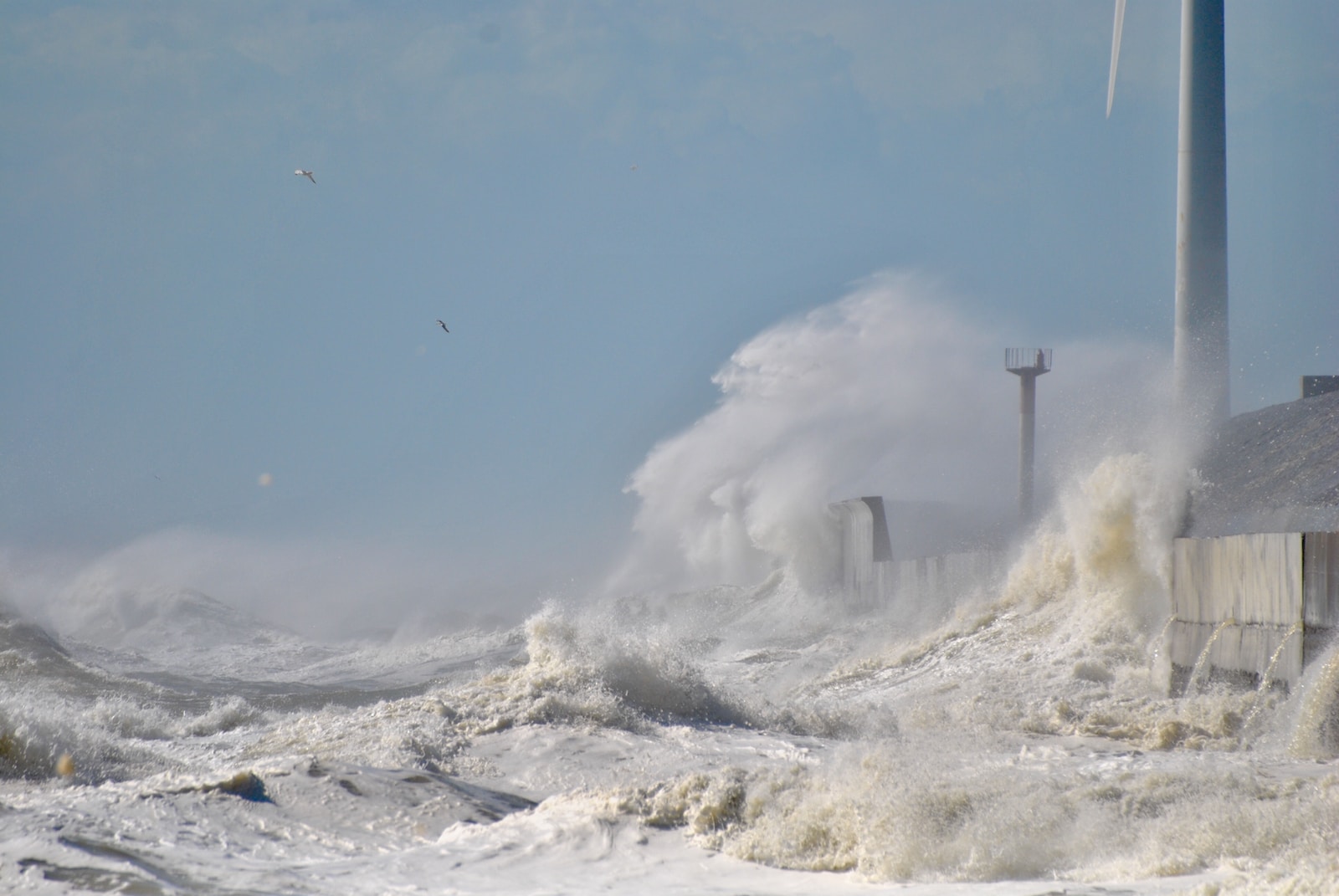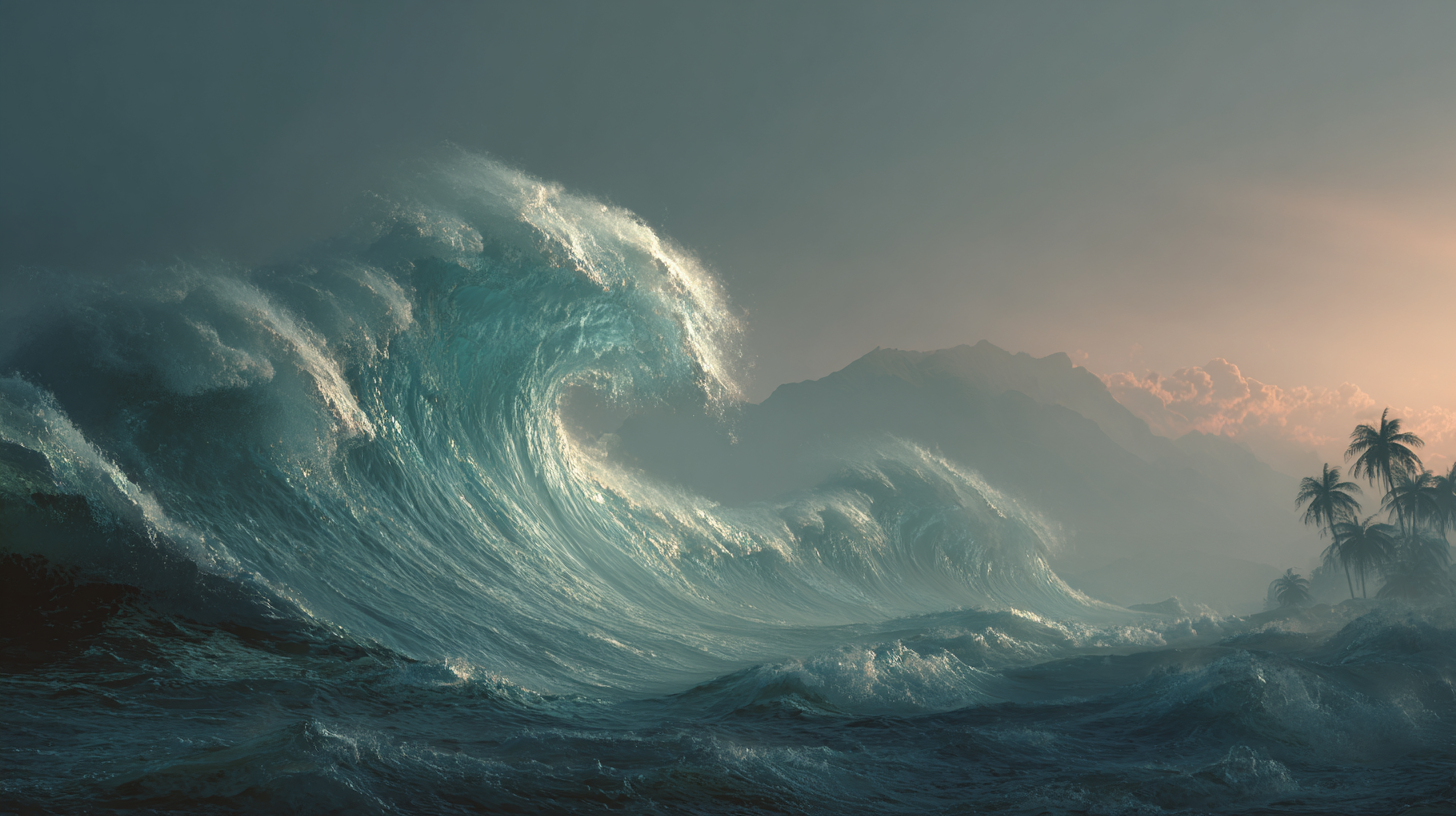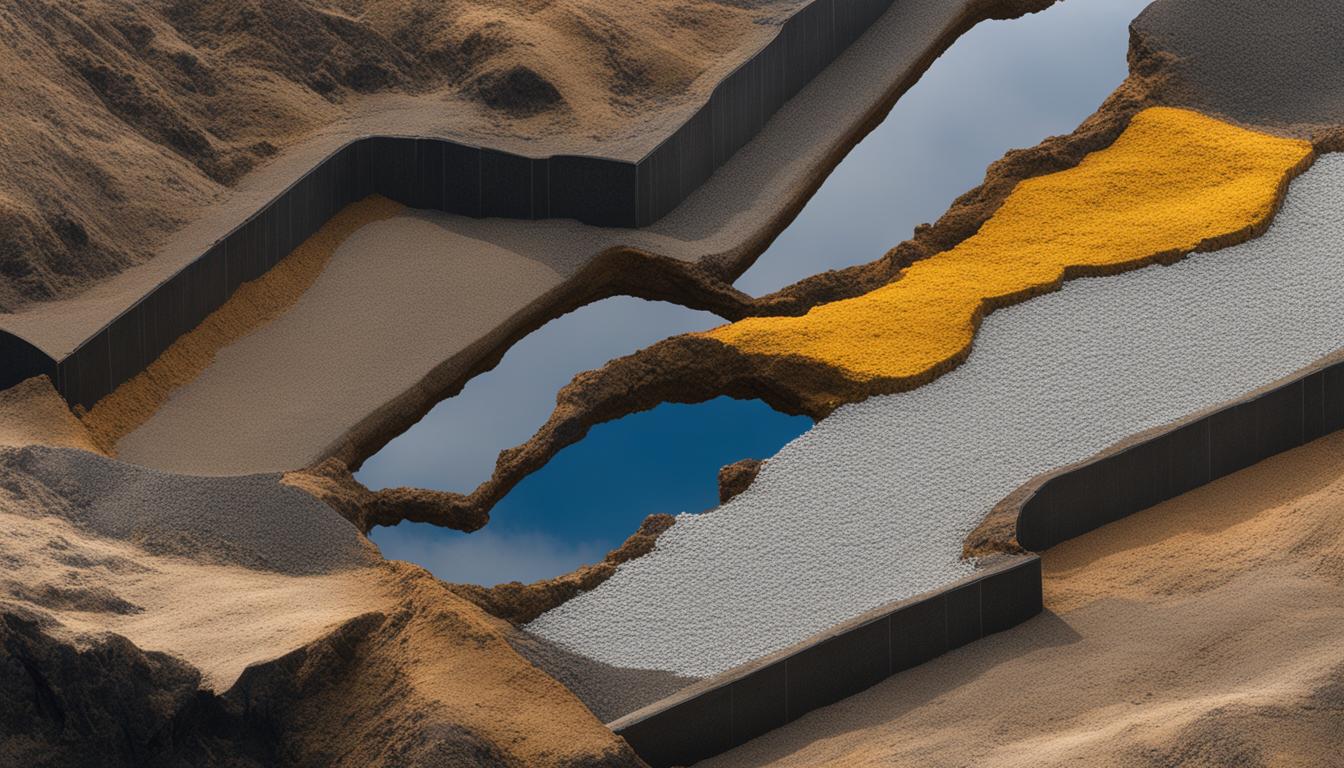It’s impossible to talk about tsunamis without first acknowledging their devastating impact on our world. In recent years, tsunamis have caused widespread destruction, claiming thousands of lives and causing billions of dollars of damage. However, it’s not just the destructive power of these waves that we need to understand — it’s also the differences between them, particularly between tidal and seismic tsunamis.
When it comes to tsunamis, there are many different ways to classify them. Some classifications focus on their causes, while others focus on their physical characteristics. However, perhaps the most useful classification for understanding the difference between tidal and seismic tsunamis is based on their triggering events: tidal tsunamis are caused by astronomical factors, while seismic tsunamis are caused by seismic events.
Key Takeaways:
- The difference between tidal and seismic tsunamis is essential to understand.
- Tidal tsunamis are caused by astronomical factors, while seismic tsunamis are triggered by seismic events.
- There are various ways to classify tsunamis, but the classification based on their triggering events is most useful for understanding the differences between tidal and seismic tsunamis.
Understanding Tidal Tsunamis
Tidal tsunamis, also known as meteorological tsunamis or meteo-tsunamis, are caused by a combination of shifts in atmospheric pressure and rapidly changing ocean currents. These factors can generate tall waves that can cause significant damage along the coastlines.
Unlike seismic tsunamis, which are triggered by earthquakes and other seismic events, tidal tsunamis have a more gradual onset and can last for several hours. They are often compared to storm surges, as they can share similar characteristics such as high winds and low pressure systems.
One of the main causes of tidal tsunamis is the interaction between tides and ocean currents. When these forces converge, they can create standing waves that are amplified by the shape of the coastline or by the presence of underwater ridges and canyons. In some cases, a sudden change in atmospheric pressure can also cause a tidal wave to form, resulting in a meteo-tsunami.
Similarities and Differences Between Tidal and Seismic Tsunamis
Despite their different causes, tidal and seismic tsunamis share some similarities in terms of their destructive potential and the warning signs that accompany them. Both types of tsunamis can cause widespread damage to coastal communities, and both can result in loss of life and property damage.
However, there are also significant differences between the two. Seismic tsunamis are often caused by an abrupt upward or downward movement of the seafloor caused by an underwater earthquake, whereas tidal tsunamis are caused by the interaction of ocean currents and tidal forces. Seismic tsunamis are characterized by high amplitude and short wavelength waves, while tidal tsunamis have lower amplitude and longer wavelength waves.
Another difference between the two is the warning time available before the tsunami arrives. Seismic tsunamis can occur suddenly, with little to no warning, while tidal tsunamis can usually be detected several hours in advance through tide gauge readings and other monitoring systems.
| Tidal Tsunamis | Seismic Tsunamis |
|---|---|
| Gradual onset | Sudden onset |
| Lower amplitude | Higher amplitude |
| Longer wavelength | Shorter wavelength |
| Detected several hours in advance | Can occur suddenly with little warning |
It is important to understand the causes and characteristics of both tidal and seismic tsunamis in order to be better prepared for these destructive events. By being aware of the warning signs and having an emergency plan in place, coastal communities can help mitigate the effects of these natural disasters.
Exploring Seismic Tsunamis
Unlike tidal tsunamis, seismic tsunamis are triggered by seismic events, such as earthquakes, volcanic eruptions, or underwater landslides. When these events occur, they displace massive amounts of water, creating giant waves that can travel across entire oceans.
One of the main causes of seismic tsunamis is underwater earthquakes. When tectonic plates shift and grind against each other, they produce seismic waves that travel through the earth’s crust. If these waves occur beneath the ocean, they can displace vast quantities of water, creating a tsunami. Similarly, volcanic eruptions and landslides can also cause seismic tsunamis by displacing water with their force.
While tidal and seismic tsunamis share some similarities, such as their destructive power and ability to travel long distances, there are also significant differences between the two phenomena. For example, tidal tsunamis are caused by astronomical factors such as tides and gravitational forces, whereas seismic tsunamis are triggered by seismic activity. Additionally, seismic tsunamis tend to have much larger wavelengths and travel at higher speeds than tidal tsunamis.
Understanding the causes and characteristics of both tidal and seismic tsunamis is crucial for predicting and preparing for these devastating natural disasters. By improving our knowledge of these phenomena, we can better protect ourselves and our communities from the destructive power of tsunamis.
Characteristics of Tidal and Seismic Tsunamis
Tidal and seismic tsunamis have distinct characteristics that set them apart from one another. Understanding these differences is crucial in predicting the potential impact of each type of tsunami and in preparing for the worst-case scenario.
Wave Height
The most apparent difference between tidal and seismic tsunamis is their wave height. Tidal tsunamis typically have a lower wave height, ranging from a few centimeters to a few meters. Seismic tsunamis, on the other hand, can have a wave height of several meters to tens of meters, making them much more destructive.
Wavelength
Another difference between tidal and seismic tsunamis is their wavelength. Tidal tsunamis have a longer wavelength, which means that they can travel longer distances with less energy loss. Seismic tsunamis, on the other hand, have a shorter wavelength, making them more compact and destructive.
Velocity
The velocity of a tsunami wave is determined by the depth of the water in which it is traveling. Tidal tsunamis tend to move slower than seismic tsunamis because they travel in shallower waters. Seismic tsunamis, which travel in deeper waters, can move at speeds of up to 500 miles per hour.
Duration
The duration of a tsunami is the length of time that it takes for the wave to pass a specific point. Tidal tsunamis tend to have a longer duration, lasting several hours, while seismic tsunamis are shorter, lasting only a few minutes.
By understanding the distinct characteristics of tidal and seismic tsunamis, we can better predict their potential impact and prepare for the worst-case scenario. It is vital to take the necessary precautions and follow safety guidelines to protect ourselves and our communities from the devastating effects of these natural disasters.
Impacts of Tidal and Seismic Tsunamis
Tidal and seismic tsunamis are among the most destructive natural disasters that can occur in coastal areas. These massive waves can cause widespread damage to buildings, infrastructure, and communities, leading to loss of life and economic devastation.
The impact of tidal and seismic tsunamis can vary depending on a variety of factors, including the magnitude of the wave, the location and population density of affected areas, and the level of preparedness and response measures in place.
Tidal tsunamis, also known as meteotsunamis, are often less destructive than seismic tsunamis due to their lower wave heights and slower propagation speed. However, they can still cause significant damage to vulnerable areas, particularly if they coincide with high tides.
Seismic tsunamis, on the other hand, can be catastrophic, with the potential to cause widespread destruction and loss of life. The 2004 Indian Ocean tsunami, which was triggered by a massive earthquake, resulted in more than 230,000 fatalities and caused billions of dollars in damage.
Overall, the impacts of tidal and seismic tsunamis highlight the importance of preparedness and response measures in coastal communities. By understanding the potential risks and taking appropriate measures to mitigate them, individuals, communities, and governments can help reduce the damage and loss of life caused by these destructive natural phenomena.
Formation and Propagation Dynamics of Tsunamis
Understanding how tsunamis form and propagate is crucial in predicting and mitigating their potential impact. Tsunamis can be generated by various triggers such as earthquakes, volcanic eruptions, and landslides that occur beneath or above the ocean’s surface. When these events occur, they cause a sudden displacement of water, resulting in the formation of large waves that radiate outward from the disturbance.
The size and speed of the waves depend on the nature and size of the triggering event. In general, larger events create bigger waves that travel faster and further. Tsunamis can travel across entire ocean basins and can reach shorelines thousands of miles away from their point of origin. As these waves approach shallow waters, their speed slows down, causing the waves to rise and increase in height, which can result in catastrophic damage to coastal areas.
The propagation of a tsunami is a complex process that is influenced by various factors, including water depth, shoreline topography, and the frequency of the waves. In deep water, tsunamis have long wavelengths and low wave heights, traveling faster than in shallow water. As the waves approach shallow waters, their wavelengths shorten, and their height increases, causing them to slow down and become more destructive.
The speed of the tsunami is also affected by the shape of the shoreline. In the case of a funnel-shaped bay or estuary, the tsunami wave can be amplified, causing more significant damage than in a straight coastline. Additionally, the direction of the waves can be influenced by underwater terrain, such as ridges and valleys, causing the waves to bend or refract.
Efforts to improve our understanding of the formation and propagation dynamics of tsunamis remain ongoing. Scientists continue to study and refine models of how tsunamis are generated and how they travel across oceans and shorelines. This knowledge is vital in improving our ability to forecast and warn people of impending tsunamis, providing valuable time for people to evacuate to safer ground.
Understanding Tidal and Seismic Waves
When it comes to understanding tsunamis, it’s essential to have a grasp of the science behind tidal and seismic waves. Tidal waves are caused by the gravitational forces of the sun, moon, and Earth, which affect the water levels in the ocean. These tides create a rhythmic rise and fall of the sea level that can result in tidal waves.
Seismic waves, on the other hand, are caused by seismic events such as earthquakes, volcanic eruptions, and underwater landslides. These events create a sudden displacement of water, generating massive waves that can travel long distances across the ocean.
Both tidal and seismic waves are characterized by specific properties, such as their wavelength, period, and amplitude. These properties determine the behavior of the waves, including how they propagate and interact with the ocean floor and coastline.
Moreover, understanding tidal and seismic waves is crucial in predicting and modeling potential tsunami scenarios. By analyzing the properties of these waves and simulating their behavior under different conditions, scientists can estimate the potential impact of a tsunami and develop effective warning systems to mitigate its effects.
In summary, having a solid understanding of tidal and seismic waves is essential in comprehending the nature of tsunamis. By exploring the science behind these waves, we can gain insights into how they form, propagate, and interact with their surroundings, paving the way for more effective tsunami preparedness and mitigation strategies.
Conclusion
Understanding the difference between tidal and seismic tsunamis is crucial for coastal communities worldwide, especially in areas with a high risk of tsunamis. This article has explored the causes, characteristics, impacts, and formation of both types of tsunamis.
Tidal tsunamis are caused by astronomical factors that affect the ocean’s tides, whereas seismic tsunamis are triggered by seismic events such as earthquakes and volcanic eruptions. Both types of tsunamis have distinct characteristics, including wave height, wavelength, velocity, and duration.
The impacts of tidal and seismic tsunamis can be catastrophic, resulting in massive destruction of coastal communities and infrastructure. Understanding the formation and propagation dynamics of tsunamis is essential in mitigating their impact and preparing for disaster management.
Therefore, it is essential to have proper education and awareness programs on the impacts and preparedness measures of tsunamis. The significance of tsunami preparedness cannot be overstated, and it is important that coastal communities have plans in place to prevent loss of life and minimize destruction.
Now that we have unraveled the difference between tidal and seismic tsunamis and learned about their characteristics, formation, and impacts, it is crucial to increase public awareness and preparation measures to safeguard life and property in the event of tsunamis.
FAQ
Q: What is the difference between tidal and seismic tsunamis?
A: Tidal tsunamis are caused by astronomical factors such as tides and gravitational forces, while seismic tsunamis are triggered by seismic events like earthquakes, volcanic eruptions, or underwater landslides.
Q: How are tidal and seismic tsunamis formed?
A: Tidal tsunamis are formed due to the interaction of astronomical forces on the ocean’s surface, while seismic tsunamis are formed by the displacement of water caused by seismic events.
Q: What are the impacts of tidal and seismic tsunamis?
A: Both tidal and seismic tsunamis can have devastating impacts on coastal communities and infrastructure. They can cause widespread destruction and have long-term effects on affected areas.
Q: What are the characteristics of tidal and seismic tsunamis?
A: Tidal and seismic tsunamis have distinct characteristics such as wave height, wavelength, velocity, and duration. Understanding these characteristics helps in understanding the nature of each type of tsunami.
Q: How do tidal and seismic waves differ?
A: Tidal and seismic waves are different in terms of their causes and behavior. Tidal waves are influenced by astronomical forces, while seismic waves are caused by seismic events. Understanding these differences helps in understanding tidal and seismic tsunamis.
Q: Why is it important to understand the difference between tidal and seismic tsunamis?
A: Understanding the difference between tidal and seismic tsunamis is crucial for tsunami preparedness and safety in coastal areas. It allows for better planning and response measures to mitigate potential risks and impacts.
 Skip to main content
Skip to main content


